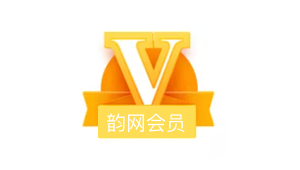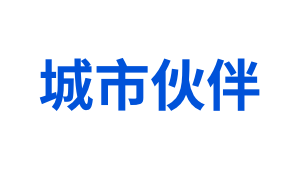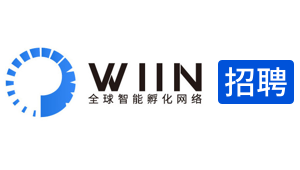本文由Sean O'Sullivan(SOSV创始人及管理合伙人)、Cyril Ebersweiler(HAX联合创始人及管理合伙人、SOSV普通合伙人) 、Benjamin Joffe(HAX合伙人)联合撰写。
How old is venture capital? Probably as old as the first hunter/gatherer. Yet, until the mid-20th century, it was mostly practiced by wealthy individuals and families. Chris Columbus himself pitched various rulers for seven years until the Spanish monarchs eventually financed his first travel to “disrupt the spice trade.” Even the fee structure of “carried interest” — typically 20 percent of profits — is said to originate in the share that the captains of merchant ships would collect for goods carried during their perilous voyages to Asia and the Americas.
风险投资有多少年的历史? 这也许可以追溯到地球上出现的第一位猎手/采集者。但是,直到20世纪中期,一些富裕的个人和家庭才开始进行风险投资。克里斯·哥伦布(Chris Columbus)曾在7年内游说多任统治者,直至西班牙皇室最终同意资助其“颠覆香料贸易”之行。甚至据说,“附带收益”(通常是利润的20%)的费用结构便来源于这位商船船长在其亚洲和美洲冒险航海旅程中所实施的货运股份策略。
Modern venture capital was initiated by French-born American Georges Doriot in 1946, who founded the American Research and Development Corporation (ARDC), the world’s first publicly owned venture capital firm. ARDC’s first major success story happened when its 1957 investment of $70,000 (about $630,000 in today’s dollars) in Digital Equipment Corporation (DEC) became worth more than $38 million at IPO in 1966 (about $270 million in today’s dollars) — a 500 multiple and 100 percent IRR for the fund.
现代风险投资是由在法国出生的美国人乔治·多里奥特(Georges Doriot)在1946年发起的,他曾创立了全球第一家国有风险投资公司美国研究与发展公司(American research and development corporation,ARDC)。1957年,美国研究与发展公司在数字设备公司(Digital Equipment Corporation,DEC)投资7万美元(相当于今天的63万美元)。1966年该公司上市时这笔投资价值达到3800万美元(相当于今天的2.7亿美元),这笔资金的价值翻了500倍,内部收益率(IRR)达到100%,这是该公司所取得第一次重大成功。
Since then, venture capital has not stopped finding new ideas to provide an edge for the success of entrepreneurs and themselves. We listed here some of the most significant innovations in financing startups, some of which are not strictly “VC.”
自此以后,风险投资一直在寻找新的思维方式,旨在为成功创业者提供资金平台,同时也让自己获益。我们在下面列出了一些金融初创公司最显著的创新形式,其中一些并非严格意义上的“风险投资”。
风险投资发展时间线
Incubators and co-working spaces
孵化器和联合办公空间
Business incubators were first launched in the 1970s, often associated with universities or state economic development organizations. Mostly real estate plays without investment, they concentrate startups in the same building with the hope that some intermingling will happen, some community will develop, helping all to thrive. Sometimes, like in the case of HBO’s Silicon Valley series, incubators will demand some equity from those who live inside their walls.
企业孵化器最早在20世纪70年代启动,通常与大学或国有经济发展组织有关。大多数房地产业务没有投资支持,因此他们将初创公司集中在同一幢办公大楼,希望这些公司相互融合,形成一定的社区,从而帮助所有公司繁荣发展。在一些情况下,例如HBO的硅谷公司,孵化器将要求从这些内部公司中获得一定的股权。
Since 2010, the co-working space model has prevailed over incubators. While highly successful business incubators like WeWork and Plug and Play also sometimes incorporate community building events, corporate events and lecture series like Startup Grind into their spaces, investment in these models is not the norm, it’s the exception.
从2010年开始,联合办公模式的发展势头逐渐盖过孵化器。尽管WeWork和Plug and Play等非常成功的企业孵化器有时也会在其内部空间举办一些社区构建活动、企业活动和讲座活动(例如创业磨坊(Startup Grind)系列),这些投资模式并非常态化,而是例外情况。
Accelerators
加速器
In 2015, more than one-third of startups raising Series A graduated from an accelerator. It might be even higher in 2017. Accelerators are a big deal.
2015年,超过1/3进行A轮融资的初创公司是从加速器毕业的。这一比例在2017年可能会更高。加速器是一种大型交易。
While they can be mistaken for a form of “business incubator,” startup accelerators are generally early-stage and hands-on forms of venture capital firms offering funding, advice and connections over an intense period — typically 3 to 5 months. Elite programs offer capital of between $100,000 and $250,000 in exchange for 6-10 percent equity and convertible loan notes (CLNs).
初创公司加速器可能会被误认为是一种“企业孵化器”形式,事实上它一般是风险投资公司的早期实践形式,可在固定时间内(通常为3到5个月)提供融资、建议和联系渠道。精英计划可提供10万至25万美元的资本,用以交换6-10%的股权和可转换债券(CLN)。
Few want to be “incubated,” but who would turn down “acceleration?”
很少有公司愿意接受“孵化”,但哪些公司会抵制“加速”呢?
Almost all accelerators (excluding Y Combinator) host their startups during their programs to maximize the interactions, skills development and network learning of their cohorts. Staff and mentors can easily offer one-on-one sessions, lectures and route visitors to the right teams. For funds investing beyond the accelerator phase (SOSV, for instance, deploys 75 percent of funds post-accelerator), co-location also allows for in-depth due diligence.
几乎所有的加速器(不包括Y Combinator)都会包含孵化初创公司的计划,以增强内部公司的相互交流、技能发展和网络学习。员工和导师可以很方便地向合适的团队提供一对一课程、讲座和路线参观。对于加速器阶段以外的投资(例如,SOSV将75%的资金投资在加速器后期),联合办公也可支持深入的尽职调查。
The big four
前四强
Today, several accelerator networks stand out by the number of startups they invest in, the amount of capital they deploy and the number of follow-on rounds. Y Combinator, the first and largest since 2005, remains the most famous generalist and graduates about 200 startups per year, while Techstars, 500 Startups, SOSV and Plug and Play each graduate close to 150 startups per year. Despite being early-stage, their scale requires funds in the hundreds of millions.
如今一些加速器网络凭借其大量初创公司投资、部署资本和后续多轮投资而崭露头角。Y Combinator公司创立于2005年,是创办最早、规模最大、最著名的企业加速器,每年扶持的初创公司数量达到200家,而Techstars、500 Startups、SOSV和Plug and Play每年扶持的初创公司数量接近150家。尽管处于早期阶段,公司的发展规模通常要求数亿美元的资金。
A tale of two (thousand) accelerators
双(千)加速器记
In addition to the Big Four, there are thousands of accelerators worldwide, most of which offer much smaller investments. Also, many of those accelerators are government-sponsored “capacity building programs.”
除了前四强,全球还有数千家加速器公司,这些公司大多提供小额投资。此外,其中的许多加速器属于政府赞助的“能力建设计划”。
In 2017, North America is host to an estimated 1,000 accelerators, and so is Europe. The count for Asia is not clear, but likely of the same order, with China being the behemoth since Chinese Premier Li Keqiang started promoting “Mass Entrepreneurship and Innovation” nationwide in 2014 (he seems satisfied with the progress).
2017年,北美的加速器数量预计有1000家,欧洲也达到如此规模。亚洲的统计结果尚不明朗,但也差不多达到相同级别,自2014年李克强总理开始在全国范围内推行“大众创业,万众创新”政策之后,中国的加速器发展也一直非常迅猛(总理对该进度似乎非常满意)。
Some firms have chosen to specialize
(e.g. Starburst for Aerospace), focus on a region, operate as a nonprofit (e.g. Mass Challenge) or via sponsorship (e.g. Plug and Play Tech Center). A large number of universities (e.g. SkyDeck at Berkeley) and corporates (e.g. Microsoft Accelerator) have also launched their own programs.
某些加速器公司已选择专业化运营(例如Starburst专注于航空航天领域),专注于某一领域,或是非盈利性运营(例如Mass Challenge)、寻找赞助(例如Plug and Play Tech Center)等手段。许多大学(例如伯克利SkyDeck)和企业(例如微软加速器)也已启动自己的计划。
Yet, the “accelerator” name is probably the most misused word in VC, possibly because the catchiness of the name and the lack of standards. Few want to be “incubated,” but who would turn down “acceleration?”
但是,“加速器”一词可能是风险投资中最容易被误用的词汇,一方面是因为该词的流行性,另一方面也是因为缺乏标准。很少有公司愿意接受“孵化”,但哪些公司会抵制“加速”呢?
There is as much variation among accelerators as between community colleges and research universities. Some don’t meet the basic criteria of offering financial and intellectual capital in exchange for equity, or bringing later-stage investors to the table. Some are even for-profit operations offering no investment and charging a fee.
社区学院和研究大学的加速器之间存在着许多差异。有些加速器在通过提供金融和知识资本以交换股权或提供后期投资方面并不符合标准。而有些加速器甚至以盈利为目的,不提供任何投资,只收取一定的费用。
Startup studios/company builders
初创公司工作室/公司创办者
Launched in 1996, Idealab is a pioneering startup studio that gave birth to dozens of successful companies. In 2007, Germany’s Samwer Brothers launched Rocket Internet as a “clone factory,” adapting successful U.S. services in untapped markets. Typically the studio provides the initial funding and keeps a majority of the shares, while offering a meaningful minority to the founding team.
Idealab创立于1996年,是一家领先的初创公司工作室,曾孵化出许多成功的公司。2007年,德国的Samwer兄弟成立了Rocket Internet“克隆工厂”,在一些未开发市场中成功开拓了美国服务。通常工作室会提供初始融资并保留大多数股份,并为创始团队提供少数股份。
In 2009, China’s Innovation Works (now Sinovation Ventures) was started by the former as an early stage investor, incubator and “startup builder”. It later evolved to become a more traditional VC. (note: our initial article mentioned them as pioneers of the “copy-to-China” company-builder model with “mixed results due to harsh local competition”. Sinovation Ventures reached out to clarify that only a couple of companies might have applied this model, and that their initial “incubator” investments returned 9x in 2 years).
2009年,中国创新工场(现为Sinovation Ventures)创办初期,采取了早期投资者、孵化器和“初创公司创办者”的形式,后来逐渐演变为更为传统的投资公司。(注:我们最初的文章将他们称为采用“Copy-to-China”(即照搬到中国)模式的先驱,最后“因为当地竞争激烈而产生了错综复杂的后果”。创新工场解释称,只有几个公司可能采用了这种模式,且在2年内初始投资回报达到9倍。)
Platform VCs
风险投资平台
Investors often tout their “value-add” to entice founders, and some VC firms have formed support teams to help their portfolio with functions like recruiting, marketing, PR, design and more.
投资者经常通过兜售其“增值服务”来吸引创始人,有些风险投资公司还创立了支持团队来提供招聘、营销、公关、设计等服务职能。
Today, Andreessen Horowitz and First Round Capital are among the most famous platforms. Some companies even offer “full-stack” support (our hardware program HAX offers expertise in domains such as prototyping, product and graphic design, electronics and mechanical engineering, manufacturing, marketing and sales and distribution). This saves time and money and lowers risks when going from lab to market.
目前,Andreessen Horowitz和First Round Capital成功跻身最著名的风险投资平台的行列。有些公司甚至提供“一站式”支持服务(我们的硬件计划HAX可提供原型设计、产品和图形设计、电子和机械工程、生产、营销和销售以及发布等领域技术支持)。这就可以节省时间和成本,并降低产品上市风险。
AngelList
股权众筹平台AngelList
Launched in 2010, this platform enables introductions between investors and startups. As of October 2017, $650 million had been invested in more than 1,700 startups. Since 2015 it also allows direct funding via its platform.
该平台创建于2010年,是投资者与初创公司之间的媒介。截至2017年10月,该平台已投资1700多家初创公司,投资数额达到6.5亿美元。自2015年开始,AngelList还允许通过其平台直接融资。
Crowdfunding
众筹
Product crowdfunding, while not a form of venture capital as it does not sell equity, has been a major addition to the early financing tools of startups, particularly in hardware. Among success stories are Oculus, acquired by Facebook for $2 billion in 2014 and Makeblock, an SOSV portfolio company building STEM robots that ran multiple campaigns and has grown to more than 500 staff.
产品众筹不销售股权,因此不是一种风险投资形式,是早期初创公司融资工具的重要补充,特别是在硬件领域。其中一些成功案例包括Oculus(2014年被Facebook以20亿美元收购)以及Makeblock公司(研发STEM机器人的SOSV产品组合公司,曾开展多轮众筹,现已发展到拥有500多名员工的大公司)。
Equity crowdfunding consists of the sale of company shares on a private exchange, generally to accredited investors. In 2012, the American JOBS Act was signed by President Obama. Further regulations A+, D and CF went into effect allowing equity crowdfunding. As of May 2017, the largest platform to date was WeFunder, which helped raise close to $18 million. By October 2017, the robotics security company Knightscope had raised more than $29 million, largely on the SeedInvest platform.
股权众筹是指以私人交换形式将公司股份销售给认证投资者。2012年,美国总统奥巴马签署了《美国乔布斯法》(American JOBS Act)。其他A+、D和CF法规生效,允许股权众筹。截至2017年5月,最大的众筹平台是WeFunder,曾帮助募集近1800万美元的资金。截至2017年10月,机器人安保公司Knightscope已募集2900多万美元的资金,主要是通过种子投资(SeedInvest)平台。
ICOs
初始发行代币融资
As of October 2017, cumulative ICO funding had reached more than $2.3 billion. While often compared to IPOs, cryptocurrency-based Initial Coin Offerings (ICOs) generally do not sell securities — which explain the general lack of regulation. Backers buy tokens giving access to a service. Those tokens can generally be traded on various specialized exchanges.
截至2017年10月,ICO融资累计已达到23亿多美元。加密型初始发行代币(ICO)经常与首次公开募股(IPO)作对比,但通常不销售证券,这就说明了一般性法规的缺失。支持者通过购买代币来获取某种服务。这些代币通常可通过多种专属交换形式进行交易。
Most ICOs so far have involved a crypto-related startup, but the scope has expanded to include other companies such as smart hardware maker Lampix, which sold for 40,921 ETH worth of “PIX” tokens (about $14 million at the time). Some companies such as Tezos and Blockchain Capital raised new venture funds via ICOs.
大多数ICO主要涉及加密相关初创公司,但目前已扩大到其他公司类型,例如智能硬件制造商Lampix曾销售40921以太坊(ETH)价值的“PIX”代币(相当于当时的1400美元)。Tezos和Blockchain Capital等公司还通过ICO募集新的风险资金。
Secondary markets
二级市场
Early liquidity allows startups and investors to avoid worrying about money or having to look for an exit prematurely during the ever-extending “private” life of the company.
早期流动资金使初创公司和投资者不必担心资金问题,或者在公司扩大时期过早寻找出路。
While this doesn’t fall into typical VC, some firms have emerged as platforms to offer liquidity to founders, investors and/or employees. Such a platform, SecondMarket, was later acquired by NASDAQ to boost its Private Market offering.
尽管这不属于一般意义上的风险投资,有些公司仍可向创始人、投资者和/或员工提供流动资金支持平台。SecondMarket便属于这类平台,后来被NASDAQ收购,以提高其私有市场业务发展。
Beyond new funding structures, VCs keep trying to find ways to ensure the success of their startups.
除了新的融资结构,风险投资还设法确保其初创公司的成功运营。
Chris Sacca, the now-retired founder of Lowercase Capital, is an investor who reached the No. 2 spot on the Forbes Midas List in 2017 and credits his success to aggressively purchasing pre-IPO shares from founders and employees.
Lowercase Capital创始人(现已退休)和投资人克里斯·萨卡(Chris Sacca)位居2017年福布斯最佳创投人排行榜(Forbes Midas List)第二位,他将自己的成功归结为大量购买创始人和员工的首次公开募股前股份。
Another firm called DST, lead by Yuri Milner, made the news in 2009 by acquiring a minority stake in Facebook from its founders and early employees at the then-shocking $10 billion valuation.
另一家公司DST创始人为尤里·米尔纳(Yuri Milner)),在2009年他宣布从Facebook创始人和早期员工手中收购Facebook的少数股权,这些股权随后估值高达100亿美元。
SPACs
特殊目的收购公司
Many startup founders dread the time, cost and difficulty of IPOs. As a result, most startups (including the vast majority of unicorns) decide to stay private longer, thereby keeping their shares illiquid.
许多初创公司无力承担首次公开募股(IPO)的时间、成本和困难。因此,大多数初创公司(包括许多巨头公司)计划在更长时间内保持私有化和公司股份的非流动性。
However, the expectations of private and public investors are not identical: VCs would often hope for a 100x return, while public investors expect to “beat the index.” High-tech companies with revenue and growth are thus particularly well-suited for public investors.
但是,私人和公众投资者的期望是不相同的:风险投资通常期待100倍的回报,而公众投资者则只是期待达到一定收益即可。因此,具有一定收入并稳定发展的高科技公司尤其适合这种公众投资。
Special Purpose Acquisition Companies (SPAC) are “shell” entities that complete an IPO to raise capital that is later used to buy shares in a private company, thereby listing shares instantly. In September 2017, two companies, Social Capital and Draper Oakwood, raised, respectively, $600 million on the NYSE and $50 million on NASDAQ, with the intention to buy shares into a growth or late-stage startup.
特殊目的收购公司(SPAC)是“空壳”公司,通过首次公开募股来募集资金,然后利用这些资金来购买私有公司的股份,从而实现立即上市。2017年9月,Social Capital和Draper Oakwood两家公司分别募集6亿美元(纽约证券交易所)和5000万美元(纳斯达克),以购买处于发展期或后期初创公司的股份。
What’s next?
未来趋势如何?
While some of the above innovations have not yet spread far and wide, we can still wonder at what 2018 will bring. Will “reverse ICOs” boom? Will the Long-Term Stock Exchange promoted by Eric Ries of Lean Startup fame take off?
尽管上述有些创新形式尚未广泛流行起来,我们仍可预测2018年的发展趋势。“反ICO融资”浪潮是否会流行起来?精简创业倡导者埃里克·莱斯(Eric Ries)所推行的长期股票交易所是否能够成型?
Beyond new funding structures, VCs keep trying to find ways to ensure the success of their startups. In addition to hands-on support for strategy, product and business development, or going global, VC firms try to foster peer learning and involve communities of supporters early on.
除了新的融资结构,风险投资还设法确保其初创公司的成功运营。除了战略、产品和业务开发实践支持以及上市,风险投资公司还努力推动同行学习风气并增强早期支持者社区的参与。
Time will tell if investors can reconcile Sand Hill Road, Main Street, Wall Street and the rest of the world!
沙山路、主街、华尔街和其他金融中心的投资市场究竟将如何发展,我们拭目以待!
本文由戈壁创投编译
原文链接:
https://techcrunch.com/2017/11/09/70-years-of-vc-innovation/







